The Contact Centre for corporate travel is the engine around which the whole business revolves. If you don’t have a smoothly operating Contact Centre, you do not have a product. The Unit can be quite a beast when it comes to Technology. The secret of success in a Contact Centre lies in the manager’s skill and ability to harness the entire offering of the various technologies employed and make them work together, to deliver a best-in-class product.
When it comes to Corporate Travel, there is no readymade Contact Centre Technology that can take care of every aspect of the service. There really is no one-size-fits-all. How then, would one deliver the service that a client requires? To answer the question, one needs to look at all the different products that are employed in such a contact centre. The diagram below shows the different technologies that need to be present in any Corporate Travel Contact Centre, worth its salt.
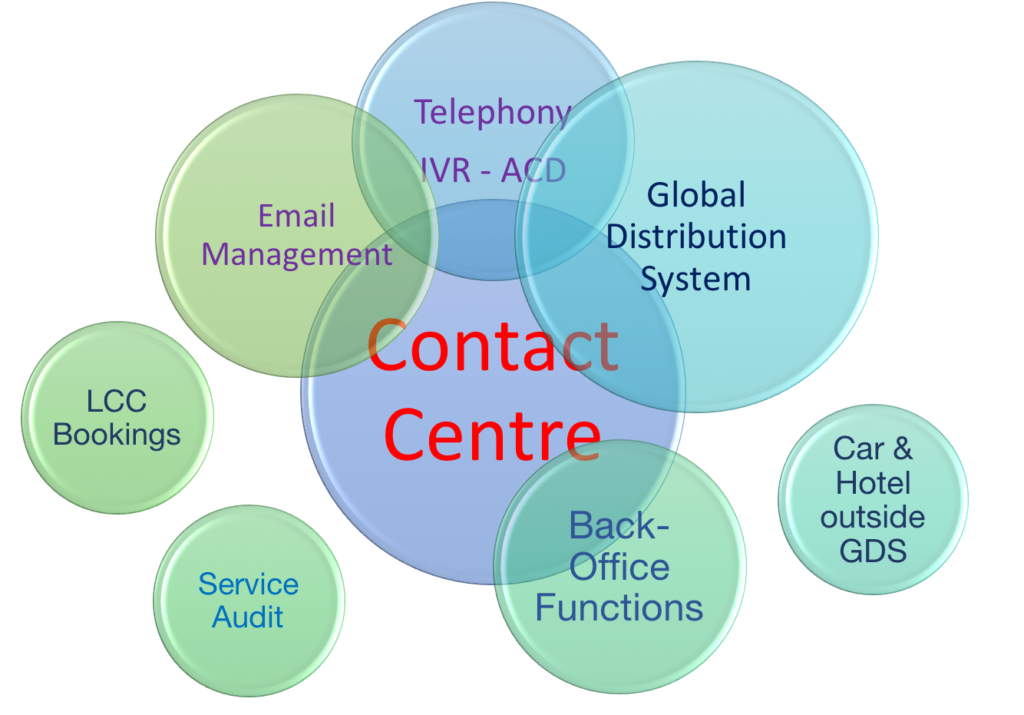
Telephony and communication in the Contact Centre
Perhaps the most utilised vehicle for communication within a contact centre is Telephony. No Contact Centre can afford to get this important function wrong. Today, there are many telephone systems available. Several of them are excellent products. You need to check however that at the very minimum, the following facilities are available: real-time management of the configuration, real-time reports on call activity, including calls handled, call waiting times, calls dropped, average call handling times, etc. The reports should cover individual staff performance, as well as that of the various groups within the Contact Centre. Avaya has some of the best systems available. Anyone setting up a Corporate Travel Contact Centre should check them out.
To IVR or not to IVR?
The Interactive Voice Response (IVR) system that is built into every Telephony system today is quite an useful tool. It however needs to be sensibly set up. Personally, I hate it. If I have to push more than 4 buttons to get to a human being, then all is not well. The consequence will usually have the callers ‘explosion rate’ to commence building up. If your endeavour to reduce costs, begins to drive customers away, then there is a fundamental flaw. I would recommend that simple logic prevails and that you set up an IVR system that does not need to launch a rocket to the moon.
Voice recognition is also increasingly employed in Contact Centres today to facilitate automation. There are many Airports today that will give you arrival or departure times of flights without one having to speak to a human being. In some environments, it works well. I would however recommend you exercise caution and not get carried away by the potential of the System. In a multinational environment, people’s accents can indeed become a challenge for the best machines.
Skill based call routing
When it comes to telephony, to handle corporate travel, how you set up your Automatic Call Distribution (ACD), is very important. I would recommend that you go for skill-based call routing. Reason: not every customer has the same need; some requirements are more complex than others. For instance, in handling labour traffic between Dubai and Mumbai no great itinerary or airfare construction skills are required. Calls requesting bookings for similar segments may go to Travel Advisors with standard skills. Whereas, planning and creating a multi-segment Business or First Class Itinerary, for a senior executive will need advanced skills and experience. An experienced Travel Consultant will be able to handle such calls more efficiently. He will be able to anticipate situations that may need flexibility in the planning of the itinerary, and also be able to recommend combinations of Airlines that could result in savings for the client. There is no need for a Consultant with superior skills to be handling a routine booking that can be almost mechanically handled. The creation of skill-based routing, needs the Contact Centre to be divided in to groups based on knowledge and skill.
You can take the skill-based routing process to another level: you could even integrate this process to accommodate language skills. In other words, you can combine non-travel skills with what the industry generally provides its clients with. In a Contact Centre I once managed, I not only had skill-based routing implemented, but we also had the ability to take calls in 5 different languages. The Unit could handle calls in English, Arabic, Tagalog, Hindi and Malayalam.
Minimising lost calls
One of the most important goals in a Contact Centre is the minimising of Lost Calls or Abandoned Calls. To achieve that, one needs to handle overflow configuration efficiently. This is also best handled in real-time. Supervisors should be empowered to switch calls according to the laws of Demand and Supply.
To work towards this goal, in addition to Supervisors having a real-time dashboard, I would also recommend the placing of video screens at strategic locations, that give all Contact Centre employees a view of the current situation, at all times. It will help in maintaining a positive attitude of staff, and enhance teamwork, consequently improving productivity.
The Global Distribution System
The Global Distribution System (GDS) deployed in the Contact Centre is certainly the heart of the engine. It is there that the actual process of booking and confirmations take place. Travel organisations may indeed have different reasons to choose a particular GDS. To optimise efficiency levels, if we are able to integrate the caller’s identity and personal data with the booking process, it will save valuable time. This of course necessitates the creation of proprietary software. If one is able to achieve that at minimal costs, transaction times can be reduced. Efficiency and maximisation of revenues always depend on the reduction of transaction times.
TMC Client Management Systems
Some of the largest Travel Management Companies, have been able to get the clients’ Human Resource (HR) and Enterprise Resource Planning (ERP) Systems to talk to the TMC’s client management systems. In such cases, it has been possible to have a traveller’s profile sit in the TMC’s own system and not on the GDS. When the Travel Booker Calls, the Consultant will be able to move the Traveller Profile from the TMCs own system into the GDS to make a travel booking. Such provisions save time for the Travel Service Provider.
Contact Centre Email management and handling
Let’s move to other systems deployed in a Contact Centre. One of the main platforms of communication today, apart from Telephony, is Email. In spite of many technology companies claiming to be able to manage emails today, there continue to be many challenges. Many Travel Contact Centres route the emails to the same staff who take telephone calls. That in my opinion, is a mistake. Successful Travel companies, handle emails and telephony separately. They only integrate the processes when there is spare capacity in one area or the other. The solution should be logical. All incoming emails should go into one mailbox and then be routed to various staff in an equitable manner. Obviously, the outflow should be continuous to prevent any build-up. Emails also need to be handled according to staff skills; and in a manner that ensures everyone gets a fair share. The whole process can be automated.

Routing for certain client originators can be classified as requiring certain skills, and be routed to staff with those skills. The system needs to log unopened emails at the end of the day and prioritise them for prompt handling the next day. Emails can also be weighted according to either customer importance (they can be charged a higher transaction fee for the privilege), or by time of arrival into the System. The best option would be to programme the system to consider both factors. Email turn-around times are often specified in the client’s Travel Policy. The configuration of the email handling units need to take the policy into account and deliver according to the client agreement.
Billing the client
Once the reservations and ticketing of passengers are done, the next process obviously should be to account the transaction and bill the client. My personal preference would be to use Card payment solutions which will automatically bill the client. All major Credit Card companies have such solutions available either directly, or through selected Banks. Corporate Credit Cards will also provide the client with useful Management Information Systems (MIRs). The other, often neglected side of this coin, is the availability of Travel Insurance to corporate travellers and its various benefits, when using a Card payment solution.
Many TMCs, for one reason or the other, provide a credit facility of their own, to clients. In such cases, the process of billing the client needs to be seamlessly taken over by the Back-Office system through hand-off files generated by the GDS. The TMC’s Back-Office system should also be able to provide such clients with Management Information Reports (MIR). The System should also provide the Accounts Receivable department with the necessary tools and reports to be able to manage credit provided to clients in an efficient manner.
Other technologies and solutions
There are other technologies that can be employed in a Contact Centre. They can be as diverse as the Contact Centre Manager’s creative thinking is capable of. For example, a client complaint management system. These usually are fairly simple systems that can be created quite easily by a Technology company. All it needs to do is to log and track complaints through the various stages of the process. It can easily be created to analyse complaints for use by the Contact Centre Manager or by Client Account Managers to brief clients as required.
There are also hardware technologies that could result in additional savings. We found in one of our Call Centres that by using two screens on each workstation, we could reduce about 25 minutes of a Travel Consultants’ work time, each day. They used one screen to access the GDS, and the other to query the Internet on Low-Cost Carrier fares, hotel rates etc., that were unavailable on the GDS. Toggling between screens saved them time.
Conclusion
Success in a Contact Centre depends on two factors. Firstly, the systems must be made to talk to each other and/or, interact with each other. The more seamless the process is, the better will be the results achieved. Secondly, the success of a Corporate Travel Contact Centre is also dependent on the management team that runs the Centre. It is they who decide how they will employ the technologies available. The Contact Centre must always function as a well-oiled machine. It must run smoothly. While it is easily possible to put in the best technologies, with cost perhaps being the only limiting factor, to make them work to the benefit of owners and clients, requires an innovative and creative management team.
© Mano Chandra Dhas
Note – Share your thoughts below. I will respond to all comments. Use the social media buttons to share this post with others who might find it useful. Please subscribe to never miss an update!
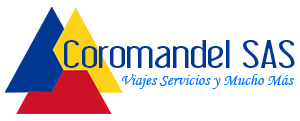
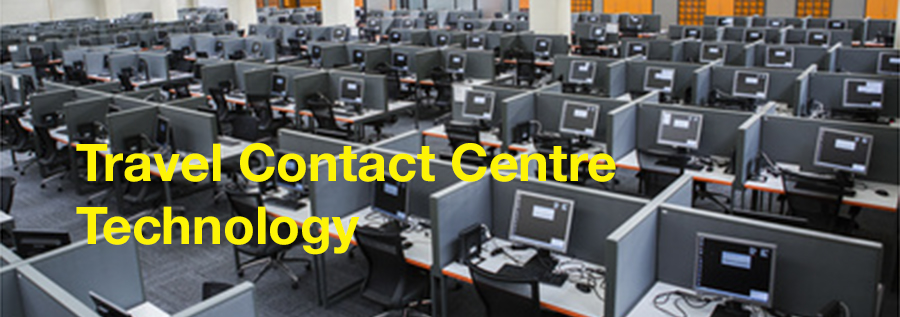
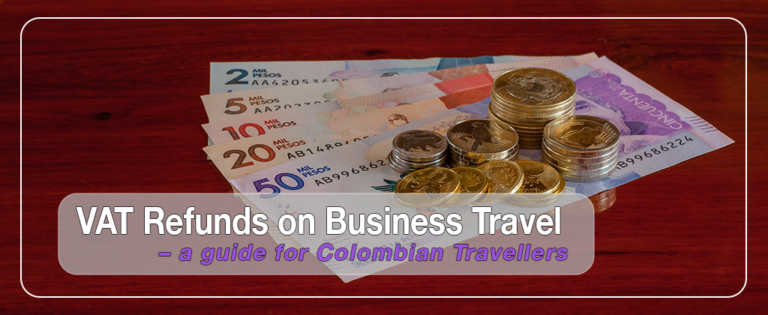

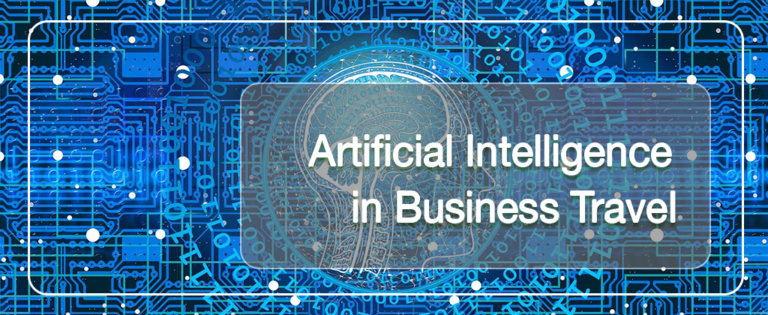
In the last 20 -30 years, we called it Telephone Sales, then Contact Centre and now Customer Service Centre. I had my initial training in British Airways and oversaw 7 airline offices – like Air India, Singapore Airlines , Royal Jordanian, Royal Brunei, Pakistan International Airlines, Kuwait Airways, and Srilankan Airlines. Customer contact has evolved from phone,fax, email, and now social media etc. Business has moved from cash, bank deposits and credit card .. which now have created online fraud and for which we now have a ‘fraud mitigation team’.
Technology has moved from the hand held ringing phone, to the latest state of art head phones with obviously no sound.
We have have had great new systems with all sorts of soft ware and Quality Management systems, all capable of incredible reports and providing great Management dashboards.
All the best Mano and all involved.. I can tell you that its been a fascinating journey and continues to be so !
Delighted to hear you continue to enjoy it, Glen. Thank you for your comment. 🙂
Is there a particular telephony call centre software that’s better than the rest for this? Or will anything do? For example, Asterisk?
There are several in the market. Avaya was once considered to be the standard. Today they all pretty much do the same thing. Many telephone companies offer their own products as well. Asterisk is more to build your own system, right? I presume it would work fine as long as you get from it everything you would need from the system. Basically, you need all the reports in real time, and also the ability to tweak resources also in real time.
There are some great providers out there. The thing is, “Contact Center Software” means so many different things. There is analytics, workforce management, security / anti-fraud, all those areas have software for the contact center.
As far as providers, there are the platform providers like Avaya, Cisco, Mitel, Asterisk, but then there are the next generation providers like Genesys, Interactive Intelligence, NICE Systems, Talkdesk, 8×8, Calabrio. Almost all of them overlap in certain functionality, but what is ideal for one market is not a good fit for another. What kind of architecture? Cloud or premises?
I know the head of call centers for the largest cruise vendor in the US, and all her agents, almost 1000 the last time we spoke, work from home.
There is no “call center software that is better than the rest,” There is only “the call center software that is most appropriate for your situation,” taking into account constraints and objectives.
Hi Loren! Thank you for your very valid comments. I can write several blogs based just on your comments! 🙂
There is a difference between a ‘general’ contact/call centre, and a Corporate Travel Contact Centre (CTCC). The latter will never usually reach the size of the former. With the former, one can easily exceed 1000 seats. While a contact centre that handles general business is easy to mechanise for several functions, a CTCC can never be completely automated. For instance, when you are dealing with products, one can easily Script a lot of the responses. You cannot script a CTCC. You cannot mechanise knowledge and experience. Again, because the numbers will never be huge, Workforce Management need not figure very high on what needs to be mechanised.
Of course, success is any Contact Centre is to aim to run the centre 24/7. That way, you will get the biggest bang for your buck. In CTCCs, there usually is no need to run the whole set up 24/7. One may need a 24 hours service section; but that can be manned by 15 or 16 staff – often less. That is because the client booking Corporate Travel, only works during office hours. The peak hours therefore will usually be from 0900 hours to about 1730 hours. It becomes pointless to maintain maximum staff strength after 1800 hours. One of the largest TMCs in the world has Contact Centres in Poland. They cater to mainly European clients and have the.ability to take on several European languages. They only have a few hundred seats in each of them. In spite of their ability to handle business right round the clock, they have no takers for such a service. Reason: there is not such a great diversity in European time zones.
CTCCs especially if they belong to one of the major networks, can be worked into what is often referred to as ‘Follow the Sun’ principle. For instance, early in the morning, a Filipino Contact Centre could handle clients, by the end of their day, they can hand over to a Middle Eastern Centre who in turn can hand over to an Irish Centre, and finally to a South American (Colombian?) Centre. That way no CTCC needs to work more than a normal day.
Another limiting factor to the use of a lot of software in the CTCC is the low margins in the business. Only the big boys will be able to invest big dollars. You are absolutely right. Contact Centres will be different by location and need. The main limiting factor will also be the types of businesses served. My blog was only meant to address mechanisation of a CTCC. 🙂